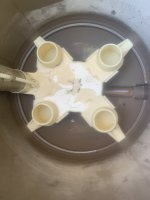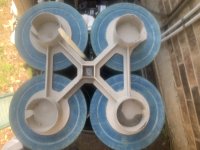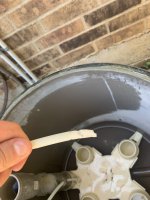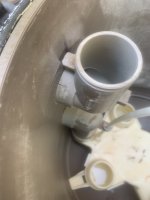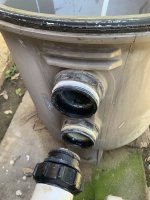You can see that the tab feeder damaged that plastic. Polaris impellers have always been completely black, not that bleached-out grey. Most do not understand what very-low pH water can do to the plastics in pool equipment.Clean break into 2 pieces. The remainder of the center is still attached to the pump...need to pry/grind that off somehow.
When your system shuts off, the very corrosive "soup" from that feeder flows into the return line and into the booster. Don't even have to have a small air leak, gravity will allow it because it is heavier than pool water.
Remove the small cover at the back of the motor. Hold the shaft with a 9/16" wrench and use a pliers to remove what's left of the impeller. Be sure to replace the PS1000 seal when the impeller is replaced.



